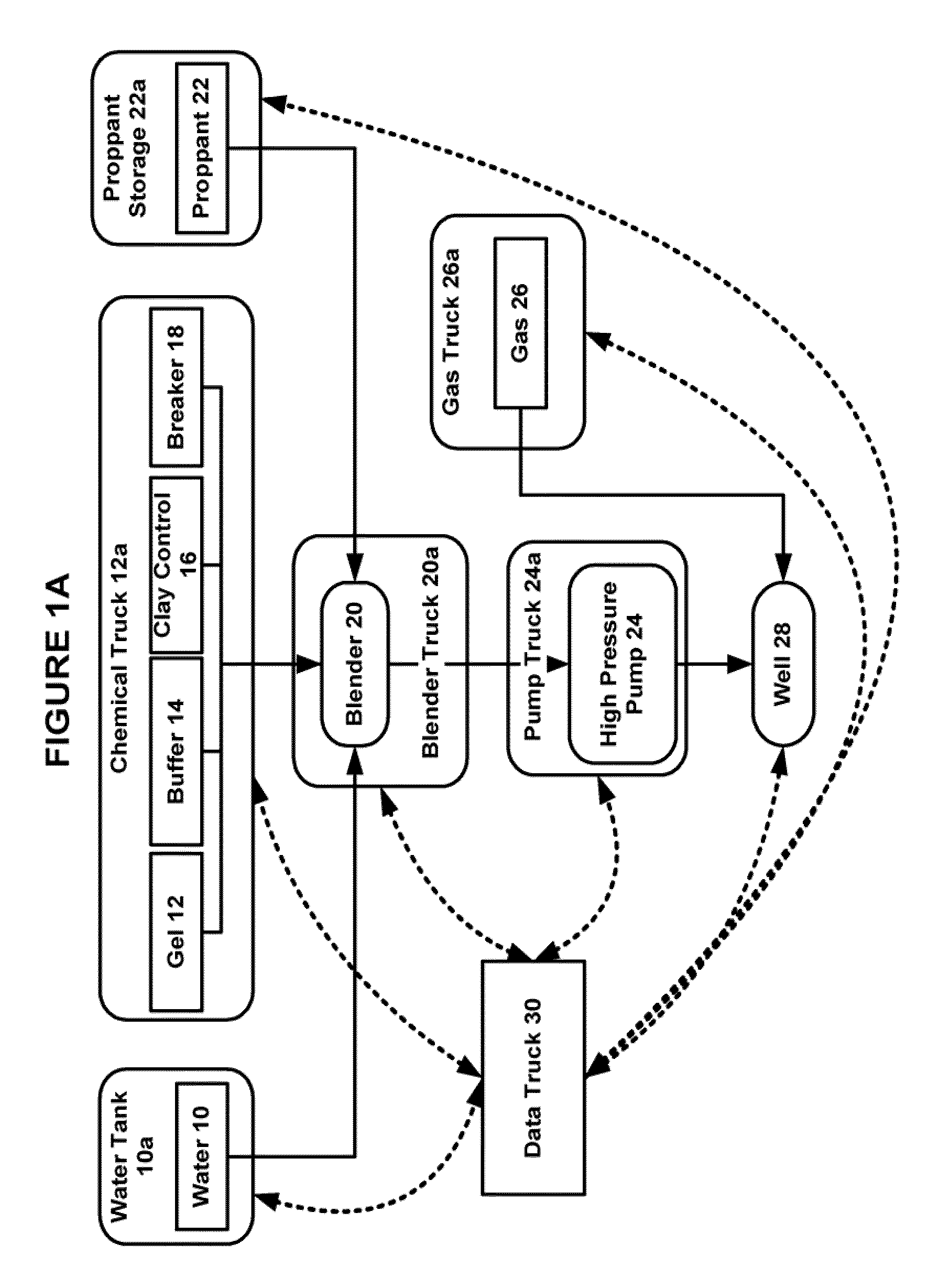Many wells won't produce long term in an economic manner without being stimulated by methods such as fracturing.
This process typically continues until poor economics of the well develop, due in part to eventually declining rates of
methane production.
One major problem in this type of fracturing is the large volumes of water required and the attendant issues relating to the disposal of the water that has been pumped downhole and ultimately recovered from the well as a
coal particle or otherwise contaminated fluid.
Naturally fractured formations in the past few years have responded quite well to slick
water based fractures, however, these types of fractures can use extremely high volumes of water, generally 2 to 3 orders of magnitude higher than traditional fracturing methods in CBM production zones.
In the case that the well has a wet CBM production zone, some current
dewatering practices have rates that can be as low as 3 m3 / day and that can extend the lengths of time by months or years for steady
methane production due to adding a large volume of fracturing water to the large volumes of
reservoir water that already needs to be removed.
Unfortunately, while such techniques are effective in limited batch operations, the need for expensive, highly specialized, pressurized pumping, mixing and containment equipment substantially increases the cost of an effective fracturing operation.
For example, a fracturing operation that can only utilize a batch process is generally limited in size to the volumetric capacity of a single pumping and containment unit.
As it is economically impractical to employ multiple units at a single fracturing operation, the result is that very high volume gas fracturing operations can only be effectively employed in relatively limited circumstances.
For example, a pure gas fracturing operation would typically be limited to pumping 300-32,000 kg of sand (proppant) into a well and is limited to the type of proppant that can be used in some circumstances.
In the case of some shallow, dry and severely under-pressured CBM production zones, the reservoir often has high permeability, often due to being naturally fractured.
During the drilling, casing and cementing process, the CBM production zone may be damaged or plugged such that perforations alone can't adequately communicate the well with the reservoir.
Where the conventional zones commonly have higher pressures than the under-pressured
coal zones, there are inherently higher risks.
In the case of some shallow, dry and severely under-pressured CBM production zones, the reservoir may have lower permeability than economically acceptable if
high rate nitrogen stimulations are performed.
However, in the case of high
viscosity fluids, such as cross-linked gel, the desired wide fracturing network is not as likely to occur during fracturing, and in most cases the cross-linking agent is toxic.
However, the greater viscosities may decrease the desired effect of forming a wide intersecting fracture network relative to lower
viscosity systems absent of foamer.
As known to those skilled in the art, most foaming agents will interfere or otherwise have a damaging effect with respect to the
desorption process of
methane from the coal faces in the production zone.
In addition, most foaming agents do not pass relevant
toxicity tests.
Furthermore, 100%
carbon dioxide gas phases may damage CBM production zones by preferentially adsorbing on coal faces compared to methane such that permeability decreases (may be up to a 4 fold decrease) due to swelling decreasing the
porosity and openness of the natural fractures.
The
viscosity of a mist will generally revert to a “mid-point” of viscosity close to that of the gas (i.e. approximately 1-3 orders of magnitude lower than that of an
emulsion) with the result being that the ability to support proppant based on viscosity is lost.
Fracturing fluid compositions are inherently “toxic” as result of their make-up and specifically as a result of constituent compounds such as cross-linking agents, viscosifying additives, and any number of low cost additives of various functions that make up a
fracturing fluid composition.
As a result, there is a significant concern in the event of the fluids coming into contact with
groundwater in either a short or longer
time frame, and the associated concern that any contaminated fluids would be subsequently consumed by humans or animals.
The deepest depth that easily processed and consumable
groundwater is found is referred to as the base of ground water in which all deeper sources are
saline and thus not fit for human or animal consumption.
The result is that all CBM production zones in the well are at risk for being exposed to all fracturing fluids pumped into all CBM production zones.
However, in shallow wells,
toxicity can be a significant problem as the fracturing operation may be conducted in relatively close proximity to
groundwater such that the groundwater can be contaminated.
Other conditions include restrictions for fracturing near a
water well, in proximity to
bedrock and limitations concerning pumping volumes during a
nitrogen fracture.
With any well operations including fracturing, there are small environmental risks from surface handling of materials before injection into the well or from recovering the fluids from the well after the frac.
Society and government are particularly demanding when the
perception that
fresh water sources are at risk through well injection or during times of drought.
Further, CBM is damaged by many gelling agents, clay control agents, surfactants, breakers, cross-linking agents, and other chemicals.
 Login to View More
Login to View More 


